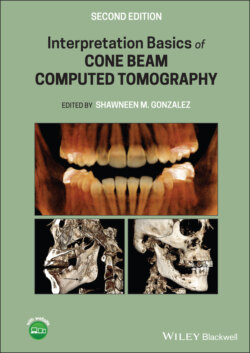Читать книгу Interpretation Basics of Cone Beam Computed Tomography - Группа авторов - Страница 30
Benefits
ОглавлениеCBCT helped to identify incidental findings that may influence treatment including but not limited to anatomic variants, pathologies and fractures. CBCT supports minimally invasive therapy for dental implants and provides a method to educate patients.
Quantity of bone, alveolar ridge morphology, maxillary sinus location, and mandibular canal location are important information prior to placing an implant. Standard intraoral radiographs provide the height of bone available but do not show whether there are ridge defects or concavities (Figures 2.17 and 2.18). CBCT imaging provides information on these things to ensure implant placement within the bone and not surrounding soft tissues. Cross‐sectional views are recommended to view the facial‐lingual width and morphology of the alveolar ridge. The recommended voxel size is 0.3 mm to reduce the overall radiation exposure.
Figure 2.17. Reconstructed pantomograph and cross‐sectional slices showing lingual concavity in posterior mandible (white arrow) and mandibular canal noted in red.
Figure 2.18. Reconstructed pantomograph and cross‐sectional slices showing facial concavity in anterior maxilla (white arrow).
